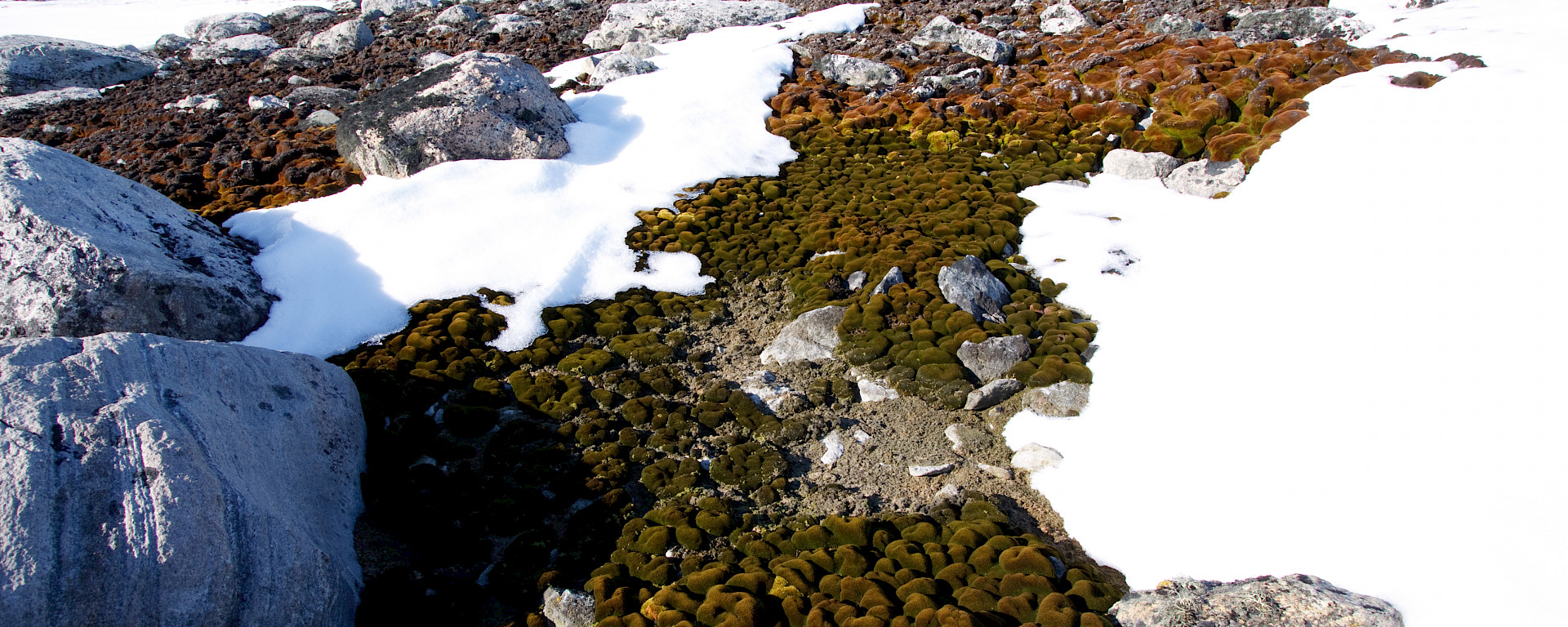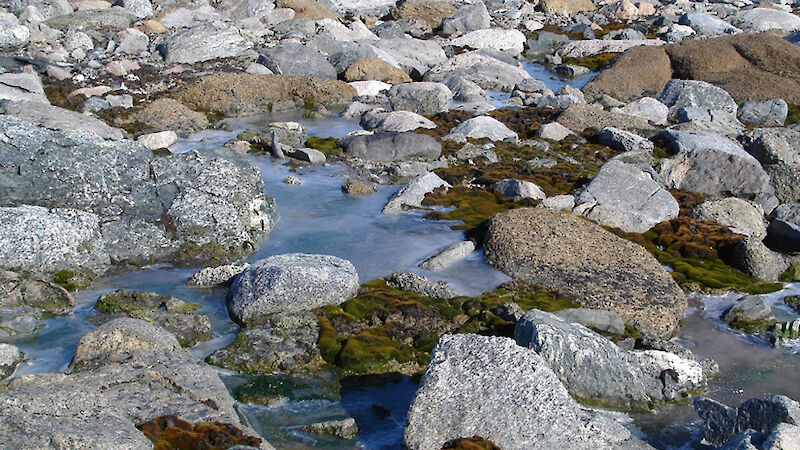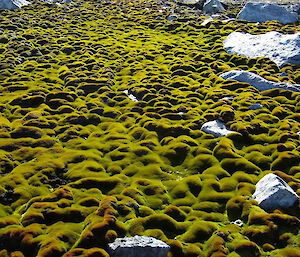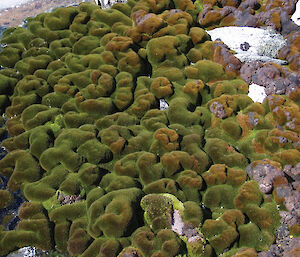Why is Casey special?
Antarctica is at the edge of life on the planet. Less than 0.5% of the Antarctic continent is ice-free rock or soil. This leaves only tiny pockets of land available for plants to establish.
Casey has the most extensive and best developed plant communities in continental Antarctica. Scientists consider it the ‘Daintree’ of Antarctica. The largest plants are the mosses. They are like miniature old growth forests, growing incredibly slowly. A single moss shoot may be over 100 years old. Very few plants can cope with Antarctic conditions, which is why the Casey vegetation is so special.
Climate change has produced drying and warming in the east Antarctic region. The ozone hole has also elevated UVB radiation over the entire continent. Casey ecosystems can provide us with a valuable sentinel to measure the impact of climate change.
What plants are in the Casey region?
The plants at Casey are in three groups:
1. Mosses and liverworts
During evolution, mosses and liverworts were among the first plants to inhabit the land. Unique characteristics enable them to survive drying and freezing. Although mosses are tough, they can only grow in the wetter areas around melt lakes and streams. Small moss patches also inhabit cracks in rocks and other sheltered areas where melt water is available. Melt of ice comes with the return of the sun in spring.
Mosses and liverworts together form the group of plants called bryophytes. There are three species of moss in the Casey area. Schistidium antarctici is a species found only in Antarctica. Bryum pseudotriquetrum and Ceratodon purpureus are species that are found across the world. One liverwort is also found at Casey, the thread-like Cephaloziella exililflora.
2. Lichens
Lichens can grow on most surfaces found in the Casey region (for example rocks, soil and also on mosses). They can absorb water from the air. Like mosses, lichens can survive long periods of desiccation. They can survive in very dry areas, and so are widely distributed. Lichens are even found on exposed rocks within 500 km of the South Pole.
3. Terrestrial and snow algae
These plants belong to the same group as seaweeds. They are found in the nutrient rich areas around penguin colonies. Terrestrial algae thrive in the salty coastal areas where mosses and lichens cannot grow. Prasiola crispa (a species of terrestrial alga) grows as a green mat and looks like sea lettuce.
Snow algae are colonies of microscopic algae, like those that cause blooms in river and marine systems. They reproduce rapidly in the snow when nutrient and temperature conditions are right.
What animals are in the Casey ecosystem?
The Casey region is home to colonies of Adélie penguins, snow petrels and Weddell and elephant seals.
Most moss beds are the sites of abandoned ancient penguin colonies. These sediments provide nutrients for the plants to grow – a ready supply of ancient fertiliser. Although no large animals rely on moss for food, moss is home to many very small animals (invertebrates).





